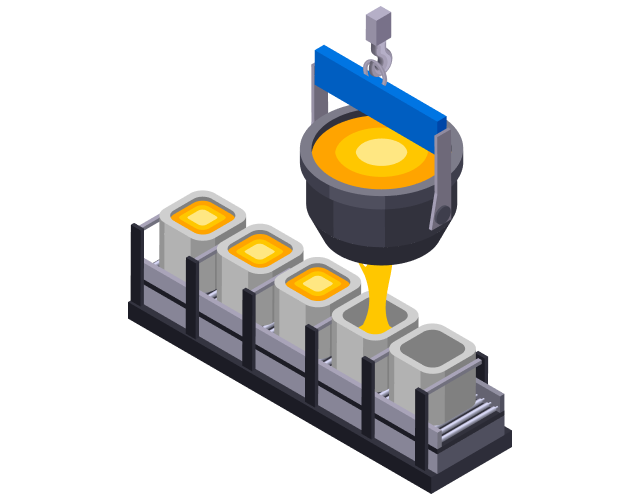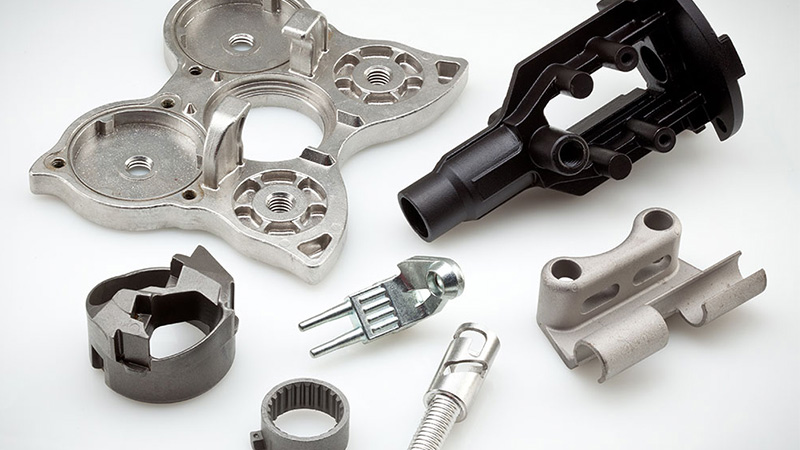Understanding how Metal Castings contribute to technological advancements
The Function of Metal Casting ahead of time Manufacturing Technologies
Metal Casting have significantly affected the evolution of making modern technologies. They use special design adaptability, allowing the development of elaborate geometries vital for various applications. Modern spreading methods are being boosted by technologies like 3D printing and automation. These advancements not only boost effectiveness yet likewise address difficulties in accuracy and sustainability. As markets remain to evolve, the function of Metal Casting remains crucial fit their future. What lies ahead in this vibrant area?
The Advancement of Metal Casting Strategies
As the demand for accuracy and effectiveness in production has actually grown, the development of Metal Casting strategies has undergone considerable transformation. Historically, Metal Casting started with simple methods such as sand spreading and lost-wax spreading, which allowed craftsmens to develop elaborate shapes. Gradually, developments in modern technology introduced processes like die casting and investment casting, boosting precision and reducing waste. Aluminum Castings. The introduction of computer-aided style (CAD) and simulation software program transformed the drawing board, enabling makers to anticipate possible problems and maximize styles before production. Additionally, the development of brand-new materials, such as advanced alloys and composites, has broadened the extent of applications for Metal Casting. Automation and robotics have further refined spreading procedures, boosting uniformity and performance. As an outcome, the Metal Casting sector has actually adapted to meet the needs of modern-day production, focusing on sustainability and innovation to remain competitive in an ever-evolving industry
Applications of Metal Casting in Trick Industries
The developments in Metal Casting methods have actually opened up a wide variety of applications across numerous markets. In the vehicle sector, Metal Casting are important for creating engine blocks, transmission housings, and other vital components that require high toughness and durability. The aerospace sector uses castings for elaborate parts like generator blades and structural parts, making sure light-weight yet robust solutions for airplane.

In addition, the construction industry utilizes Metal Casting for structural aspects such as fittings and beam of lights, adding to the stability of structures and infrastructure. In the energy sector, castings play a critical duty in making parts for wind generators and power generation devices, boosting performance and integrity. Furthermore, the clinical field benefits from precision spreadings made use of in medical tools and prosthetics, demonstrating the adaptability of Metal Casting across diverse applications. This broad use highlights the relevance of Metal Casting in contemporary production techniques.
Benefits of Metal Casting in Modern Manufacturing
Metal Casting offer many benefits that substantially improve modern production procedures. One essential benefit is style versatility; Metal Casting enables the creation of intricate shapes and intricate geometries that are impossible or frequently hard to accomplish with other manufacturing approaches. This ability enables suppliers to enhance item layouts for functionality and performance.
Additionally, Metal Casting can sustain a vast array of materials, including light weight aluminum, steel, and iron, which can be customized to meet details mechanical properties and rust resistance requirements.

Cost-effectiveness is an additional significant advantage; Metal more tips here Casting processes can generate large amounts of get rid of minimal material waste, thereby decreasing production expenses.
Additionally, the resilience of actors steel elements adds to the durability of products, minimizing the requirement for frequent substitutes. On the whole, the benefits of Metal Casting considerably add to efficiency, sustainability, and innovation within modern-day manufacturing settings.
Advancements Driving the Future of Metal Casting
While conventional Metal Casting strategies have actually served the sector well for decades, current developments are positioned to reinvent the area. Advancements such over here as 3D printing modern technology permit quick prototyping and the production of intricate geometries that were previously unattainable. These developments not only improve layout versatility yet also minimize waste and shorten lead times. In addition, the combination of automation and robotics in casting processes is enhancing procedures, enhancing accuracy, and boosting worker safety and security. The development of new alloys and composite materials is enabling the development of more powerful, lighter castings customized for details applications. Digital innovations, including artificial intelligence and artificial intelligence, are enhancing casting parameters and predictive upkeep, driving better high quality control. Jointly, these developments are pressing the limits of Metal Casting, promoting higher performance and sustainability in manufacturing, and placing the sector for future development and competition.
Difficulties and Solutions in Metal Casting Processes
As advancements in Metal Casting modern technology proceed to improve the industry, various challenges remain that manufacturers need to address to fully leverage these advancements. One considerable problem is the variability in material homes, which can cause irregular quality and efficiency. This variability frequently results from changes in resources and processing conditions. Furthermore, the rising costs of power and products position financial restraints, pressing you could try these out suppliers to seek a lot more efficient procedures.
To deal with these difficulties, firms are significantly adopting automated systems and advanced simulation methods to enhance precision and consistency. Applying high quality control procedures throughout the manufacturing procedure likewise helps in discovering problems early. Investing in study for alternate materials may reduce expenses and boost sustainability. By dealing with these difficulties with cutting-edge solutions, the Metal Casting market can improve performance and maintain competition in the advancing production landscape.
Regularly Asked Inquiries
What Products Are Typically Made Use Of in Steel Casting Procedures?
Typical products used in Metal Casting processes include light weight aluminum, magnesium, bronze, and iron. Each material has one-of-a-kind residential or commercial properties that satisfy different applications, boosting the flexibility and performance of the last actors items in various sectors.
Exactly How Do Environmental Regulations Influence Metal Casting Procedures?
Ecological regulations force Metal Casting procedures to adopt cleaner methods and modern technologies, often enhancing manufacturing costs. Conformity may lead to cutting-edge processes that minimize waste and discharges, inevitably advertising sustainability within the Metal Casting market.
What Are the Safety And Security Actions in Metal Casting Facilities?
Safety and security measures in Metal Casting facilities consist of correct ventilation, personal protective equipment, routine safety training, tools maintenance, and adherence to security laws, ensuring a secure environment for employees while lessening threats related to harmful materials and procedures.
How Is Top quality Controlled in the Steel Casting Refine?
Quality assurance in Metal Casting involves rigorous evaluations, consisting of aesthetic assessments, dimensional checks, and material testing. Adherence to market criteria and applying top quality management systems assures that castings fulfill specific needs throughout the manufacturing procedure.
What Is the Future Job Outlook for Metal Casting Professionals?
The future task overview for Metal Casting experts shows up appealing, driven by advancements in modern technology and boosting demand across numerous markets (Wisconsin Aluminum Foundry). Development in automation and lasting practices will likely produce brand-new opportunities in this sector
Historically, Metal Casting began with straightforward methods such as sand spreading and lost-wax spreading, which permitted artisans to produce elaborate forms. Over time, innovations in innovation presented processes like die casting and investment spreading, boosting precision and reducing waste. In addition, the medical area advantages from precision castings made use of in medical instruments and prosthetics, demonstrating the versatility of Metal Casting throughout diverse applications. Metal Casting offer countless benefits that considerably boost contemporary production processes. Common materials made use of in Metal Casting procedures consist of aluminum, magnesium, bronze, and iron.